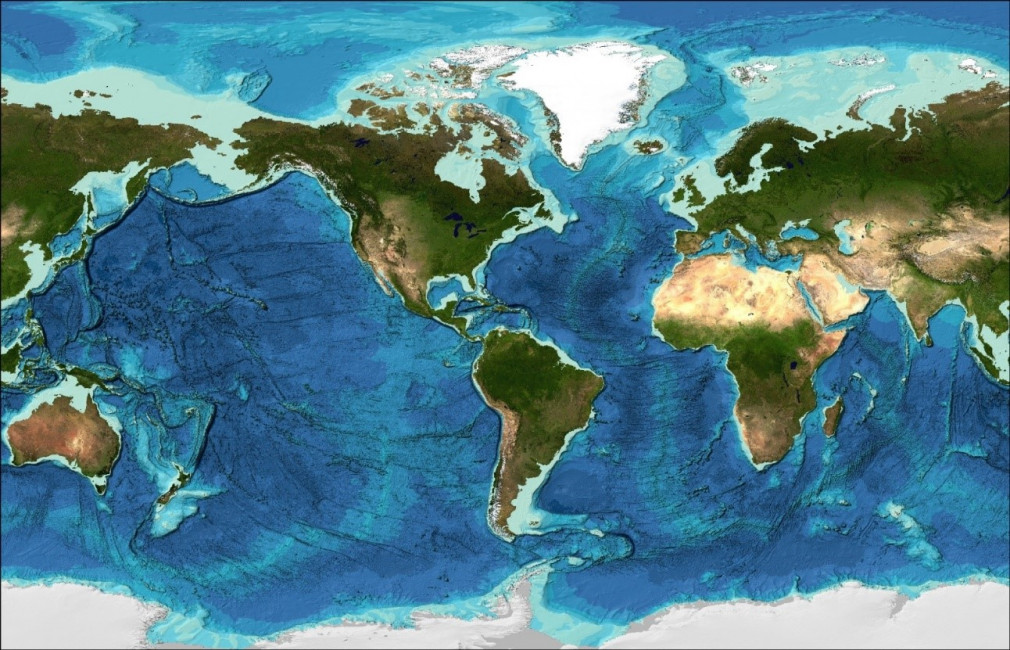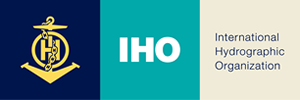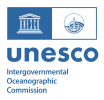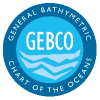
From the press release:
London, 13 June 2019 – The data available to produce the definitive map of the world’s ocean floor has more than doubled, just two years after the launch of an international effort to produce a complete map by the year 2030.
Following the efforts of The Nippon Foundation-GEBCO Seabed 2030 Project, coverage of the world’s ocean floor has now increased from 6 per cent to 15 per cent. This is equivalent to around 32,000,000 square kilometres of new bathymetric data, an area greater than the landmass of the entire African continent. Heeding the call from Seabed 2030, industry is now making significant contributions to the Seabed 2030 mission to map the entirety of the world’s ocean floor: around 570,000 square kilometres of data – roughly the size of Kenya – have been donated by industry partners for inclusion into the new map.
The new figures were presented by Dr Graham Allen, Acting Director of Seabed 2030, to more than 100 representatives of international governments and organisations at the 101stmeeting of the Maritime Safety Committee, at the International Maritime Organisation(IMO) in London today.
The project’s efforts to map the entire ocean floor were given a dual boost last month with the news that a team made up of alumni of The Nippon Foundation-GEBCO Postgraduate Training Programme at the University of New Hampshire, US, had won the $4 million grand prize in the Shell Ocean Discovery XPRIZE, a competition to stimulate technological innovation in ocean mapping. It was also announced that XPRIZE and Seabed 2030 would enter into a new partnership to deepen cooperation in pursuit of mapping of the world’s entire ocean floor.
The General Bathymetric Chart of the Oceans (GEBCO) is the only intergovernmental organisation with a mandate to map the entire ocean floor. With its origins in 1903, pioneered by Prince Albert I of Monaco and inspired by the work of Professor Julien Thoulet, GEBCO aims to produce the most authoritative, publicly-available bathymetric datasets for the world’s oceans.
Mapping the world's ocean floorA complete map of the world’s ocean will facilitate a better understanding of fundamental processes including ocean circulation, benthic habitat distributions, weather systems, tides,sediment transport, tsunami wave propagation, and climate change. This new depiction of ocean floor topography will help identify underwater hazards and inform sustainable marine resource management and infrastructure development – all aspects vital to the future of ocean exploration.
Seabed 2030 was launched at the UN Ocean Conference in 2017 by Mr Yohei Sasakawa, Chairman of The Nippon Foundation, as a collaborative international project with the objective of producing a complete and definitive map of the world’s ocean floor by 2030. Toachieve this, Seabed 2030 aims to incorporate all currently available data into the GEBCO grid; to identify existing data not in publicly available databases and seek to include them; identify the areas for which no data exist; and inspire and inform future mapping missionsin these areas.
Based on the assessments made by Seabed 2030, less than 20 per cent of the ocean floor has been mapped with modern survey instruments, and not all of these data were included in the 2014 GEBCO grid. At the target resolutions adopted by the Seabed 2030 project, thegrid published in 2014 was only 6 per cent complete.
As part of the Seabed 2030 Project, four regional centres were established to coordinate and oversee the sourcing and compilation of bathymetric data from portions of the world ocean. These regional centres are based at the Alfred Wegener Institute in Germany, covering the Southern Ocean; Stockholm University in Sweden, in partnership with the University of New Hampshire, US, for the Arctic and North Pacific Ocean; the Lamont Doherty Earth Observatory at Columbia University, US, covering the Atlantic and Indian Oceans; and the National Institute of Water and Atmospheric Research (NIWA) in Wellington, New Zealand, covering the South and West Pacific Ocean. All four centres have all convened regional mapping meetings that brought together representatives from industry, academia, and government. Regional data products are fed from these centres into a Global Data and Coordination Centre hosted at the British Oceanographic Data Centre, National Oceanography Centre, in Southampton, UK.
The recently released GEBCO 2019 Grid represents a major global increase in the resolution at which bathymetric data are presented, doubling that of the 2014 grid. It has been developed using datasets from all Seabed 2030 regional centres, and contains data contributed through agreements with a wide variety of partners, including public and private sector organisations.
These partners include Fugro, one of the world’s leading private sector off-shore survey companies, which agreed to leave its on-board echosounders switched on while travelling between client projects in order to collect transit data, and committed to openingdiscussions with clients to investigate how proprietary data can be shared with the scientific community without compromising commercially sensitive details.
Texas-based surveying company Ocean Infinity will donate 120,000 square kilometres of data collected during its search for the missing Malaysian airliner MH370, while in 2019 the Five Deeps Expedition agreed to donate all bathymetric data collected during its pre-divesurveys at the deepest points of each ocean, and to optimise its tracks between sites and collect transit data for the project. To assist these efforts and further the development of ocean science through capacity building programmes, Seabed 2030 has provided expert mappers to operate these on-board sonar systems.
“The publication of the new grid shows a significant increase in the data available to us about the ocean floor”, said Dr Graham Allen, Acting Director of The NipponFoundation-GEBCO Seabed 2030 Project.
“Such an increase has largely been made possible by the partnerships struck between Seabed 2030 and members of the international maritime community, and we are indebted to those organisations that have contributed their data or are currently in the process of collecting it for inclusion in the grid. This is a big step forward for us in our efforts to identify and map the gaps that remain.”
The new grid is available to download now at www.gebco.net, and will be showcased later in the year at a symposium to mark the progress of Seabed 2030.
ENDS
Notes to Editors: For more detailed information on The Nippon Foundation-GEBCO Seabed 2030 Project,please visit our website, seabed2030.gebco.net, Like our Facebook page, follow us onTwitter @Seabed2030, or contact Dr Graham Allen on director@seabed2030.org .
For media inquiries, contact James Killin at James@raittorr.co.uk or +44 (0)20 7922 7719
About The Nippon Foundation-GEBCO Seabed 2030 Project
The Nippon Foundation, a private, non-profit foundation, was established in 1962 for the purpose of carrying out philanthropic activities, using revenue from motorboat racing. The Foundation’s overall objectives include social innovation, assistance for humanitarian activities and global ocean management. Its philanthropic ideals embrace social development and self-sufficiency, and it pursues these principles by working to improve public health and education, alleviate poverty, eliminate hunger and help disabled people.
The General Bathymetric Chart of the Oceans (GEBCO) partners The Nippon Foundation in the Seabed 2030 Project. GEBCO is a joint project of the International Hydrographic Organization (IHO) and the Intergovernmental Oceanographic Commission (IOC) of UNESCO – the United Nations Educational Scientific and Cultural Organization. It is the only intergovernmental organisation with a mandate to map the entire ocean floor. It has its origins in the GEBCO chart series initiated in 1903 by Prince Albert I of Monaco, and aims to provide the most authoritative, publicly-available bathymetric datasets for the world’s oceans.
The Nippon Foundation-GEBCO Seabed 2030 Project is a collaborative project between The Nippon Foundation and GEBCO to inspire the complete mapping of the world’s ocean by 2030 and to compile all bathymetric data into the freely-available GEBCO Ocean Map. Working under the auspices of the International Hydrographic Organization (IHO) and UNESCO-Intergovernmental Oceanographic Commission (IOC), GEBCO has a 100-year history of ocean floor mapping. Seabed 2030, launched at the United Nations Ocean Conference in 2017, is building a global community of ocean mappers, hydrographers, scientists, industry and the public to discover and publish all existing bathymetric data. Seabed 2030 advocates for new mapping expeditions to ‘map the gaps’ in our knowledge of the seafloor and provide the world with the definitive map of world bathymetry.



